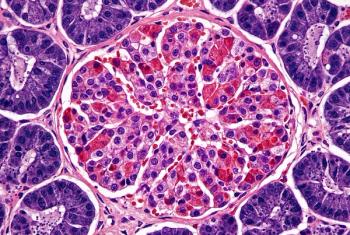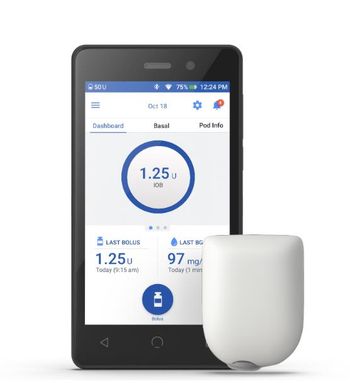
Obesity Is Now Also a Problem for People With Type 1 Diabetes
Key Takeaways
- Type 1 diabetes management has improved, but obesity rates have risen, complicating patient care.
- Intensive therapy in diabetes management is linked to weight gain and better glucose control.
Patients with Type 1 diabetes are often excluded from diabetes and weight loss trials.
Forty years ago, the vast majority of patients with Type 1 diabetes didn’t need help with the problem of being overweight and obese.
Irl Hirsch, M.D., of the University of Washington School of Medicine in Seattle, recalls that most patients he saw as a medical student in the 1980s seemed underweight, rather than overweight.
“Importantly, we were just starting to use HbA1c [hemoglobin A1c], and it was rare to see a Type 1 patient of any age with an HbA1c less than 10%,” he noted in an email interview. “We simply didn’t have the tools we have now, which is why the complication rate was so high.”
When the landmark
That trial found that patients who received intensive therapy versus what was then conventional treatment had higher annual weight gain than the conventional cohort — and, eventually, had higher rates of obesity than the control group. “Weight gain was associated with greater glucose control, in addition to family history of obesity and/or Type 2 diabetes,” Hirsch said.
In the years since, major gains have been made in the treatment of Type 1 diabetes. Those improvements have now created a new issue for clinicians: how to manage patients with both Type 1 diabetes and obesity.
That’s the subject of a review article recently
Ruddiman said in an email that her patients with Type 1 diabetes have a good understanding of the links between insulin requirements and their ability to regulate weight.
“Some of my very active patients have also become highly aware of the impacts Type 1 diabetes has on their individual glycemic changes during different types of exercise, which can be really helpful when working together to formulate a safe and effective plan for regulation of glycemia during physical activity,” she said.
In the review, the authors noted that while the American Diabetes Association (ADA) recommends 150 minutes of moderate exercise each week for patients with Type 1 and Type 2 diabetes, many patients shy away from exercise due to fear of hypoglycemia.
The review discusses the current research landscape with regard to lifestyle changes in Type 1 diabetes. When it comes to nutrition, they note that the consensus ADA recommendations do not single out a particular nutrition plan for patients with Type 1 diabetes, emphasizing instead individualized nutrition planning.
Interest in GLP-1s
Not surprisingly, in recent years, many people with Type 1 diabetes are, at the very least, curious about glucagon-like peptide 1 (GLP-1) drugs, which include semaglutide, which is approved for treatment of Type 2 diabetes, not Type 1, although that does not preclude people with Type 1 diabetes from taking it for weight loss, its other major indication. Semaglutide is sold under the brand name Ozempic for diabetes and under Wegovy for weight loss. Ruddiman said about half of her patients with Type 1 diabetes request prescriptions for a GLP-1 or the closely related dual GLP-1 /glucose-dependent insulinotropic polypeptide (GIP) drugs for weight loss. Tirzepatide is a GLP-1/GIP drug, which is sold under the brand name Mounjaro for Type 2 diabetes and as Zepbound for weight loss.
“In most scenarios, when starting a GLP-1 or GLP-1/GIP RA [receptor agonist], I would make an empiric reduction in both basal dosing and prandial/correctional ratios based on current individual glycemic trends, insulin sensitivity, activity level, dietary patterns, etc.,” Ruddiman said.
For patients using multiple daily injection regimens, Ruddiman said she would be more aggressive about scaling back insulin doses. Automated insulin delivery systems, she said, allow greater flexibility to make conservative dosage reductions and allow the pump’s algorithms to continue adjusting doses as needed.
Although clinicians have found effective ways to treat patients with Type 1 diabetes and obesity, one of the themes of the review is that there is a relative lack of data around how to treat patients with Type 1 diabetes who are overweight or obese.
The authors said patients with Type 1 are often excluded from trials of weight loss therapies, creating a knowledge gap when it comes to this patient group. Hirsch said the reasons for their exclusion are multifactorial.
“First, [comorbid obesity and Type 1 diabetes] is a relatively new problem,” he said. “Second, after lifestyle changes, it is fraught with potential safety issues.”
He noted that studies of Victoza (liraglutide) a decade ago showed it led to higher rates of
Although excluding patients with Type 1 diabetes was understandable back then, Hirsch said, with continuous glucose monitors and GLP-1s, that is all about to change.
Newsletter
Get the latest industry news, event updates, and more from Managed healthcare Executive.






















































